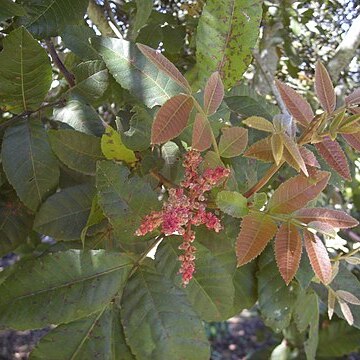Trees or shrubs, monoecious. Branchlets usually hairy towards apex, lenticellate. Leaves paripinnate, with leaflets opposite or alternate, entire, serrate, serrulate or denticulate, coriaceous, or leaves simple, alternate or fasciculate, with lamina entire, dentate, serrate or lobed. Inflorescences axillary, raceme-like or paniculate or in small clusters, rarely flowers solitary; cymules stalked or subsessile; bracts ovate, minute to small. Flowers small, regular. Calyx saucer-shaped, shallowly 4–6-lobed or truncate, with lobes ovate, ± valvate; or calyx broad, shortly cupular, 5-lobed or finely 5–10-toothed or truncate. Petals 4 or 5, or absent, broadly ovate, shortly clawed; scales broad, inflexed, hairy, crestless. Disc complete. Stamens 5–12, rarely more; filaments filiform, shorter than or as long as anthers. Ovary 2–4-locular; 1 ovule per locule; style filiform. Fruit usually 1–4-lobed, the lobes mostly knob-like, globose, subglobose or ellipsoidal, turgid, 1-locular, 1-seeded; pericarp mostly thin, drying ± crustaceous or almost woody, splitting irregularly. Seed globose, shiny; aril cupular, red, smooth or granular.
Fls perfect to unisexual in panicles; calyx 4-5-lobed, hairy within; petals 0; disk 8-lobed; stamens 5-8. Ovary obliquely obcordate, compressed, 1-celled; style short, stigma 2-3-lobed to simple; ovule solitary. Capsule ± woody, subglobose, crested; seeds arillate, cots spirally coiled. Trees with alt., pinnate, exstipulate lvs. About 20 spp. of Hawaii, Pacific Is, New Guinea, Australia. The N.Z. spp. endemic.

